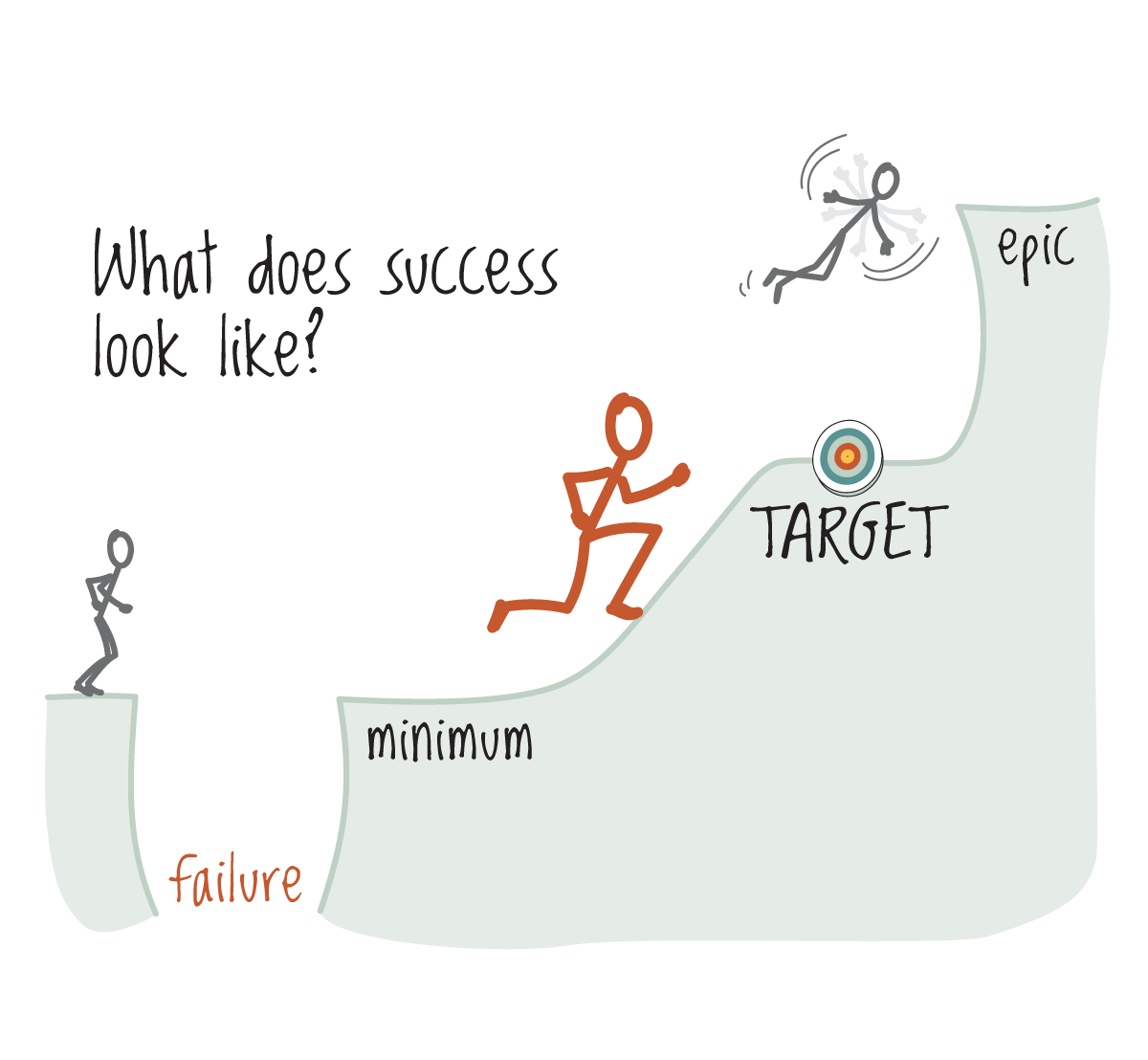Success Spectrum

Updated: October 25, 2015
Purpose
Get clear on your goals, and make them better.


participants
Muscles

Pausing

Asking generative questions

Listening actively

Acting strategically
Steps
- Pick a project. If you’re working out with others, you can each pick the same or different projects.
- Take a few minutes to imagine what your project would look like if it were successful?
- Take five minutes to start capturing the different ranges of what success would look like — from minimum (i.e. must happen to call the project successful) to target (i.e. going for it, but probably won’t hit all of these) to epic (i.e. not going for it, but would be amazing if it happened). If you are working out face-to-face, use sticky notes. If you are working remotely, use a Google Doc.
- Take five minutes to capture what failure would look like. Review and adjust your minimum success column to make sure it’s consistent with your failure column.
- Review your success spectrum with your partner. Exchange feedback. (5 min each)
- Revise your success spectrum based on your discussion, and quickly share your changes with your partner. (5 min each)
Design Notes
All too often, groups are not specific enough about what success or failure looks like. As a result, groups move forward thinking they have alignment, only to find out later that they don’t.
The Goals / Success Spectrum is a toolkit designed to help you get very clear about goals and outcomes. It defines success along a spectrum — from minimum to target to epic — which gives you a much more nuanced and specific sense of what you’re trying to accomplish as well as different scenarios for success and failure.